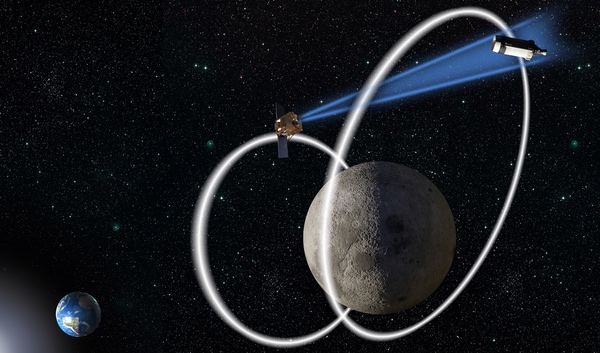Galactic dissonance for the Space Forceby Matthew Jenkins
|
| The problem is that it has not figured out how it looks different than what the Air Force did for many years or, more importantly, how to highlight that new value. |
Fast forward to the nascent Space Force, and it feels like the newest military service is lost somewhere between trying to do what the Air Force Space Command always did—and did well, mind you—and trying to chart its unique path with new uniforms and a song. It is no wonder Congress is confused and annoyed.
Looking at their recent efforts, one can’t help but feel like they’re watching a toddler claim adamantly that everything they see and touch is “theirs,” yet there appears to be no understanding of other claimants or geopolitics. There is an even greater feeling that the Space Force is looking for its own Ostfriesland moment. The problem is that it has not figured out how it looks different than what the Air Force did for many years or, more importantly, how to highlight that new value to Congress, the taxpayers, or even the other services of the United States.
The Space Force has a critical mission. It starts with continuing to enable the terrestrial fight, and then it moves to defending US orbital assets. This begins with space-enabled warfighting capabilities, something the Air Force and the intelligence community have long done well. Then, the mission moves to space situational awareness (SSA) capacity to inform space domain awareness. The United States has some SSA capabilities, but it is fair to say we haven’t yet perfected them. We have capability gaps we desperately need to solve to enable our ability to fight through a conflict. However, the Space Force’s effort to “do new” has led them to look past these gaps and instead begin studying SSA requirements for cislunar space.
To be clear, this is not the same problem but an exponentially more difficult one. Cislunar SSA is made more complicated by the technological challenges of a mission 400,000 kilometers away. Bandwidth and communication relays become key drivers in what you can and can’t do while orbiting the Moon.
The natural question is, why the United States is doing it? The short answer is because China did it. China put a vehicle in cislunar space that talks to its lunar rover. Some believe that China’s operations on the far side of the Moon are troublesome. This fear drives precious U.S. defense spending to address a perceived threat. Whether there actually is a Chinese threat to be worried about is undoubtedly subject to debate. Still, the fact remains that it seems a hard sell to convince taxpayers that we need to have military and warfighting capabilities around the Moon where there are no humans present. Certainly not the Ostfriesland moment the Space Force is looking for.
| The lack of a coherent space strategy leaves the Space Force defining its own mission spaces and grasping at anything and everything it can to show its worth. |
In an effort for the service toddler to grab another toy unclaimed at recess, the Space Force is also aiming to take on a new mission. The Space Force recently awarded contracts to advance the state of active debris removal (ADR). This is a crucial mission area, but it is not one that the military should be doing. Companies like Northrop Grumman’s SpaceLogistics and Astroscale are already charting a course to create ADR capabilities that are not military in nature or intent. In fact, other countries would likely perceive these non-governmental, commercial capabilities as less provocative. In addition, the dual-use conundrum that has vexed the United States (and other countries) for decades would be equally applicable here. Without enhanced standards of conduct and more transparency into what space systems are actually doing and when they’re doing it, having a military capability with the sole function of rendezvous and proximity, along with docking operations, would undoubtedly run the risk of inadvertent escalation. This, presumably, would be the opposite of the desired result. Again, perhaps not the Ostfriesland moment it is looking for.
Finally, the Space Force recently acknowledged that it might be interested in augmenting its orbital assets with commercial assets. As if obfuscating military distinction couldn’t be any more complicated, this seems like another bad idea. If that is the case, the United States must be willing to accept civilian space assets as legitimate military targets and, if called upon, defend them with the same effort as military space assets. While this is not a new challenge, it has garnered greater attention as the US government has subsidized the use of Starlink as Ukrainians fight invading Russians. The Russian government has certainly taken notice.
This isn’t an inditement of the Space Force. It should be expected that, left to its own devices, the newest military service will solidify its existence and purpose. In doing so, growing pains are expected and normal. However, the lack of a coherent space strategy leaves the Space Force defining its own mission spaces and grasping at anything and everything it can to show its worth. The Space Force’s purpose and role in supporting national space policy need to be delineated. Specifically, we need answers about how the Space Force protects American interests at home and abroad by applying spacepower and space-enabled capabilities and services. Once Congress and the taxpayers understand that answer, then the Space Force can understand that as well—then it may well find its Ostfriedland moment.
Note: we are using a new commenting system, which may require you to create a new account.
